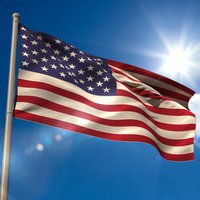United States footwear imports with slow growth

In 2013, the United States (US), the largest footwear importer, bought 2 338 million pairs of shoes abroad, valued at 25 317 million USD, a 2% and 4% increase compared to 2012, respectively. Value of exports increased 5.8% notwithstanding relative stability registered in quantities
The US are a massive importer of footwear and in 2013 the growth continued, even though at a slow rhythm, 2% in volume and 4% in value, now reaching 2 338 million pairs and 25 317 million USD. Suppliers of footwear are highly concentrated as the top five countries of origin accounted for 93% of American imports, with China holding 69% of total value (83% of total if we consider volume of imports). Vietnam (12%), Italy (5%), Indonesia (5%) and Mexico (2%) followed. Out of the five, only China registered declines in both quantities and value of sales to the US, while the other four countries incremented volume and value of sales. Vietnam must be underlined as quantities and value rose 20.3% and 20.8% respectively, and now reach 232 million pairs worthing 3 026 million USD.
In this context, China is the key trade partner of the US, and according to Matt Priest, FDRA (Footwear Distributors and Retailers of America) President, the country continues to rely heavily on that Asian country to produce footwear for the domestic market and this won’t change dramatically in the short terms. “Many of our members are exploring other sourcing opportunities to help diversify away from China. These markets include other traditional footwear producing countries such as Vietnam and Indonesia where we continue to see impressive growth. We also see growth in other countries such as Cambodia and Ethiopia where the US has not traditionally sourced footwear. In spite of this continued diversification, China will play a dominant role in production for US consumers for years to come”, Mr. Priest commented.
Average price of imported footwear showed a very slight increase of 1.7%, reaching now 10.83 USD, highly impacted by the cheaper average footwear imported from China (9.18 USD), the lowest average price from the top 20 suppliers of the US. If we exclude China from that group, the average price paid by the US is 35.79 USD.
The United States are not a key exporter of footwear, and 2013 was marked by a relative stability with quantities practically frozen at 2012 level (82.6 million pairs compares to 82.7 million pairs in the previous year) and value of exports growing 5% from 1 100 million USD to 1 164 million USD. Average price increased 6% from 13.3 USD in 2012 to 14.11 USD in 2013.
Top five buyers of American footwear accounted for 63% of US sales abroad. Canada is the most relevant buyer with a share of 37% of international sales; Republic of Korea (8%), Mexico (8%), Japan (7%) and United Kingdom (3%) complete the top. Japan and Republic of Korea registered significant declines on the quantities bought, -18.5% and -28.5% respectively, which also reflected on the value of exports to these two countries, showing decreases of -8.8% and -15.4%, respectively. With tendencies in the opposite direction, Mexico and the United Kingdom registered growth in the volume (16.7% and 73.5%) and value of their purchases (54.2% and 55.0%).
The mix of exported and imported footwear has been quite stable in the US in 2013. Leather products, with a share of 51% of total footwear exports, continued to be the most looked for type of product, followed by rubber and plastic (20%). Similar distribution by type of product has been registered in the imported footwear: leather footwear represents 50% and rubber and plastic represent 29%.
Negotiations of two of the most important upcoming free trade agreements involve the United States - TPP (Trans-Pacific Partnership) and TTIP (Transatlantic Trade and Investment Partnership) - and are expected to show progress during 2014. Matt Priest underlined that these two agreements are of extreme importance to FDRA and its members: “As an association, we continue to advocate for duty-free treatment of all footwear immediately and are the only footwear association in the US pushing for this outcome. Our industry paid an astonishing 2.5 billion USD in footwear duties in 2013. Each of these agreements provide the industry and our consumers with a unique opportunity to permanently reduce a portion of that 2.5 billion USD.”
The President of the FDRA continued to reflect upon this pressing topic, identifying the benefits and the concerns that surround the two trade agreements currently in discussion. “The main benefit these agreements will provide is the permanent elimination of duties on imports from TPP and TTIP countries. In 2013 alone, 364 million USD were paid in duties on TPP footwear imports and 178 million USD on TTIP footwear imports. Eliminating these duties would provide great benefit to our members and consumers in an era of increasing costs. We are also hopeful that US negotiators are successful in dismantling the Japanese Tariff Rate Quota (TRQ) on leather footwear that has long served as a barrier to US footwear exports to Japan.” declared Mr. Priest, adding, “We have several concerns regarding the final outcome of TPP negotiations. Even though our goal is for duty free treatment of all footwear immediately, it’s possible that the agreement might include long duty phase-outs on imports of footwear that are deemed sensitive by some. It is our strong belief that any long phase-outs will undercut the value of the agreement and provide an advantage to a select few special interests even though many of these interests also source from Vietnam. With almost 100% import penetration for footwear, it defies logic to keep these duties in place after TPP is implemented.”
The industry will continue to be impacted by change in Mr. Priest’s opinion, but he defends it will be key for members of the association to keep focus on the fact that challenges often bring opportunities: “The evolution of retail in the US will continue to create challenges for our industry as the retail landscape is dramatically changing. Helping our members engage their customers through a variety of different channels — in store, online and through social media – is a top priority for FDRA. But the opportunities are clear — online footwear sales and the opening of global markets are key to the industry’s continued growth. Finding new customers and distributing our brands worldwide will help our industry evolve in a way that increases sales, drives job growth within the industry and develops new and exciting designs and innovations. On the sourcing and regulatory side, it’s our job to arm our members with the most pertinent information and analysis available to ensure continued supply chain enhancement and compliance. Laws and policies impacting the production of footwear change every day and so we are focused on doing our part as an industry to shape policy and drive the flow of information to our members. We will, of course, continue our push to eliminate duties on footwear and trade barriers that impact the movement of footwear in markets all over the world.”
In this context, China is the key trade partner of the US, and according to Matt Priest, FDRA (Footwear Distributors and Retailers of America) President, the country continues to rely heavily on that Asian country to produce footwear for the domestic market and this won’t change dramatically in the short terms. “Many of our members are exploring other sourcing opportunities to help diversify away from China. These markets include other traditional footwear producing countries such as Vietnam and Indonesia where we continue to see impressive growth. We also see growth in other countries such as Cambodia and Ethiopia where the US has not traditionally sourced footwear. In spite of this continued diversification, China will play a dominant role in production for US consumers for years to come”, Mr. Priest commented.
Average price of imported footwear showed a very slight increase of 1.7%, reaching now 10.83 USD, highly impacted by the cheaper average footwear imported from China (9.18 USD), the lowest average price from the top 20 suppliers of the US. If we exclude China from that group, the average price paid by the US is 35.79 USD.
The United States are not a key exporter of footwear, and 2013 was marked by a relative stability with quantities practically frozen at 2012 level (82.6 million pairs compares to 82.7 million pairs in the previous year) and value of exports growing 5% from 1 100 million USD to 1 164 million USD. Average price increased 6% from 13.3 USD in 2012 to 14.11 USD in 2013.
Top five buyers of American footwear accounted for 63% of US sales abroad. Canada is the most relevant buyer with a share of 37% of international sales; Republic of Korea (8%), Mexico (8%), Japan (7%) and United Kingdom (3%) complete the top. Japan and Republic of Korea registered significant declines on the quantities bought, -18.5% and -28.5% respectively, which also reflected on the value of exports to these two countries, showing decreases of -8.8% and -15.4%, respectively. With tendencies in the opposite direction, Mexico and the United Kingdom registered growth in the volume (16.7% and 73.5%) and value of their purchases (54.2% and 55.0%).
The mix of exported and imported footwear has been quite stable in the US in 2013. Leather products, with a share of 51% of total footwear exports, continued to be the most looked for type of product, followed by rubber and plastic (20%). Similar distribution by type of product has been registered in the imported footwear: leather footwear represents 50% and rubber and plastic represent 29%.
Negotiations of two of the most important upcoming free trade agreements involve the United States - TPP (Trans-Pacific Partnership) and TTIP (Transatlantic Trade and Investment Partnership) - and are expected to show progress during 2014. Matt Priest underlined that these two agreements are of extreme importance to FDRA and its members: “As an association, we continue to advocate for duty-free treatment of all footwear immediately and are the only footwear association in the US pushing for this outcome. Our industry paid an astonishing 2.5 billion USD in footwear duties in 2013. Each of these agreements provide the industry and our consumers with a unique opportunity to permanently reduce a portion of that 2.5 billion USD.”
The President of the FDRA continued to reflect upon this pressing topic, identifying the benefits and the concerns that surround the two trade agreements currently in discussion. “The main benefit these agreements will provide is the permanent elimination of duties on imports from TPP and TTIP countries. In 2013 alone, 364 million USD were paid in duties on TPP footwear imports and 178 million USD on TTIP footwear imports. Eliminating these duties would provide great benefit to our members and consumers in an era of increasing costs. We are also hopeful that US negotiators are successful in dismantling the Japanese Tariff Rate Quota (TRQ) on leather footwear that has long served as a barrier to US footwear exports to Japan.” declared Mr. Priest, adding, “We have several concerns regarding the final outcome of TPP negotiations. Even though our goal is for duty free treatment of all footwear immediately, it’s possible that the agreement might include long duty phase-outs on imports of footwear that are deemed sensitive by some. It is our strong belief that any long phase-outs will undercut the value of the agreement and provide an advantage to a select few special interests even though many of these interests also source from Vietnam. With almost 100% import penetration for footwear, it defies logic to keep these duties in place after TPP is implemented.”
The industry will continue to be impacted by change in Mr. Priest’s opinion, but he defends it will be key for members of the association to keep focus on the fact that challenges often bring opportunities: “The evolution of retail in the US will continue to create challenges for our industry as the retail landscape is dramatically changing. Helping our members engage their customers through a variety of different channels — in store, online and through social media – is a top priority for FDRA. But the opportunities are clear — online footwear sales and the opening of global markets are key to the industry’s continued growth. Finding new customers and distributing our brands worldwide will help our industry evolve in a way that increases sales, drives job growth within the industry and develops new and exciting designs and innovations. On the sourcing and regulatory side, it’s our job to arm our members with the most pertinent information and analysis available to ensure continued supply chain enhancement and compliance. Laws and policies impacting the production of footwear change every day and so we are focused on doing our part as an industry to shape policy and drive the flow of information to our members. We will, of course, continue our push to eliminate duties on footwear and trade barriers that impact the movement of footwear in markets all over the world.”











